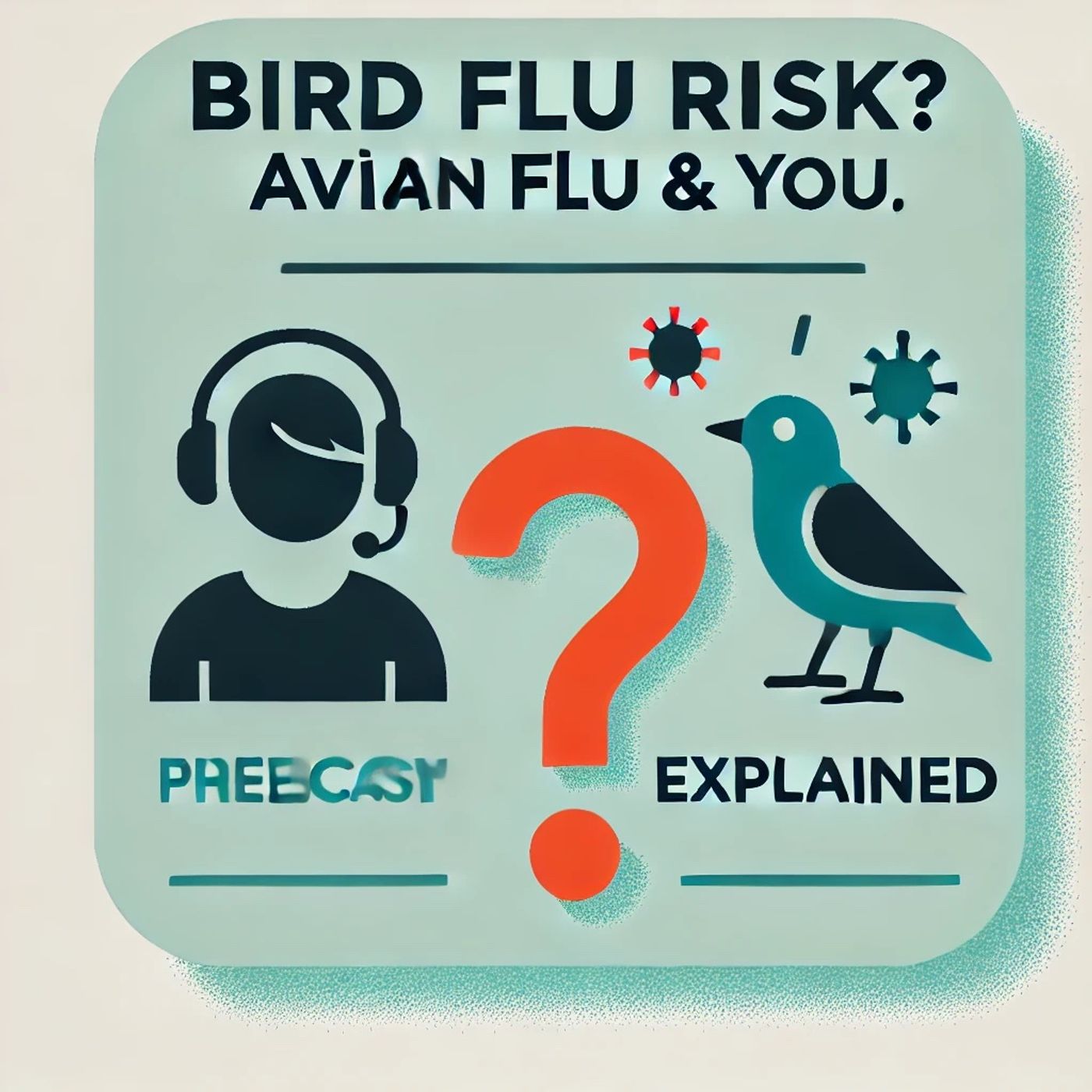Podcast Episode Details
Back to Podcast Episodes
Bird Flu 2025: Essential Guide to Understanding Your Personal Risk and Staying Safe from Avian Influenza
Welcome to Bird Flu Risk? Avian Flu & You, Explained. I’m your host, and today, we’re helping you understand your personal risk for bird flu—avian influenza, or H5N1—in three minutes. Let’s get right into your “risk calculator” for 2025.
First up, **occupation matters most**. If you’re a poultry or dairy worker, you face the highest risk due to regular exposure to birds, livestock like cows, or their environments. This group includes farm hands, those handling raw milk, veterinarians, slaughterhouse staff, and wildlife responders. Even backyard bird flock owners and hunters of wild birds have higher exposure. The CDC and other agencies emphasize that *these are the people who should be most vigilant*.
Now, let’s talk **location**. If you live or work in an area with known outbreaks—such as near commercial poultry farms, major dairy centers, or along migratory bird pathways—your risk ticks up. Conversely, people living in urban settings, away from affected animals or farms, are considered low risk by the CDC as of August 2025.
**Age and health status are important, too.** Bird flu symptoms tend to be more severe in older adults, those with chronic health issues, or immune compromise. Children, in contrast, have typically shown lower rates of serious illness. If you have underlying conditions or are over 65, extra caution is wise.
Here’s a quick “risk assessment” in action:
- Scenario 1: Maria, a healthy teacher in a city, shops at stores and cooks poultry well—her risk is very low.
- Scenario 2: Dave, 58, works daily at a poultry processing plant in a recently affected state—his risk is moderate to high.
- Scenario 3: Sam, 38, is a backyard chicken owner in a known outbreak county, but wears gloves and washes thoroughly—her risk is low, but vigilance is advised.
To those *in high-risk groups*, such as farm or dairy workers: wear protective gear, avoid direct contact with sick or dead animals, and practice strict hygiene. Seek prompt medical care if you experience flu-like symptoms after exposure, even mild ones. According to the CDC and international agencies, transmission to humans remains rare, and human-to-human spread has not been observed.
If you’re in the **low-risk group**, there’s no need to worry day-to-day. Properly cooked poultry, eggs, and pasteurized milk are safe. Bird flu is not spreading widely among people.
When should you be vigilant? Direct contact with sick birds, cows, or their environments, especially in affected areas, means you should monitor your health and act quickly if symptoms develop. If you’re not exposed to these settings, you can be reassured.
The bottom line: Know your exposures, practice good hygiene, and follow local health advice. Most people should not be worried, but if you’re in a high-risk job or area—stay aware and take extra care.
Thanks for tuning in to Bird Flu Risk? Avian Flu & You, Explained. For more practical health insights, come back next week. This has been a Quiet Please production. For more, visit Quiet Please Dot A I. Stay safe, and see you soon.
For more http://www.quietplease.ai
Get the best deals https://amzn.to/3ODvOta
Published on 3 days, 17 hours ago